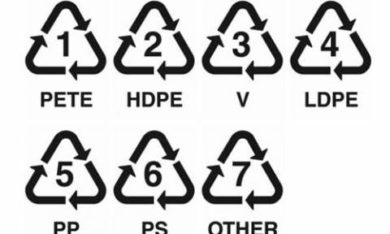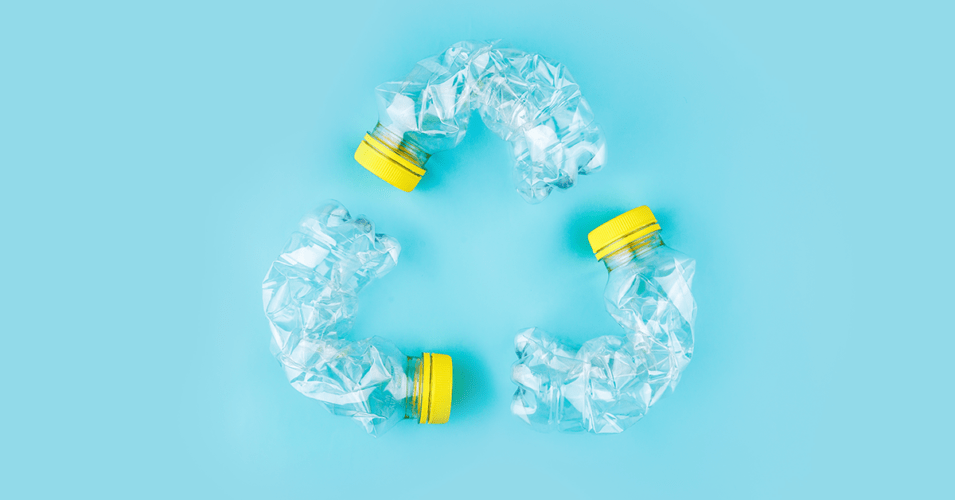
The number within the recycling symbol on plastic containers, known as an SPI Code, provides a wealth of information about the safety and biodegradability of each plastic type. Understanding these codes will help you know how to sort out used materials for recycling. For quick reference, here’s a quick look at the different codes:
What Is an SPI Code and Why Does It Matter?
The SPI (Society of the Plastics Industry) Code is a numbering system that identifies different types of plastics based on their chemical composition. This code, typically displayed within a recycling symbol, helps recyclers understand how each plastic should be handled and processed.
7 Types of Plastics That Can Be Recycled
For quick reference, here’s a quick look at the different recycling SPI codes:
- Polyethylene Terephthalate (PETE or PET)
- High Density Polyethylene (HDPE)
- Low-Density Polyethylene (LDPE)
- Polyvinyl Chloride (P or PVC)
- Polypropylene (PP)
- Polystyrene (PS)
- Miscellaneous Plastics
Now let’s dive deeper to learn more about each of the seven plastic types:
Widely-Accepted Plastics That Can Be Recycled
1. Polyethylene Terephthalate (PETE or PET)
First Used: 1940
Polyethylene Terephthalate (PETE or PET) is the most commonly used plastic for beverage bottles, food containers, and packaging. It is widely recycled and can be turned into a variety of products, such as clothing (polar fleece), carpets, and new plastic bottles. However, PET can absorb odors and chemicals from the items it holds, and high heat exposure may cause harmful chemicals to leach into the contents.
Recycling: PET is easily accepted at most recycling plants and can be recycled indefinitely into new bottles, clothing, and even construction materials.
2. High-Density Polyethylene (HDPE)
First Used: 1950s
HDPE is commonly used in milk jugs, cleaning bottles, and yogurt containers. It is the most commonly recycled plastic, known for its strength and durability. It is deemed safe for food contact and is one of the safest plastics for both people and the environment. HDPE does not leach chemicals into food or beverages, making it ideal for everyday products.
Recycling: HDPE is widely accepted at recycling centers, with its recycled form used in products like plastic lumber, park benches, and piping.
Sometimes-Accepted Plastics That Can Be Recycled
3. Low-Density Polyethylene (LDPE)
First Used: 1950s
LDPE is often used in plastic bags, plastic wraps, and squeezable bottles. It has a simple structure, making it easy to produce, but hard to recycle. LDPE is considered a safe plastic, but it tends to tangle in recycling machinery, which can disrupt the recycling process.
Recycling: Some recycling programs accept LDPE, but it remains difficult to process. When recycled, it can be made into garbage can liners, bubble wrap, and furniture.
4. Polyvinyl Chloride (P or PVC)
First Discovered: 1838
PVC is often used in pipes, flooring, and medical equipment. It’s one of the oldest plastics, but it contains harmful chemicals that make it challenging to recycle. PVC can be flexible or rigid, depending on the additives used. It’s typically found in products like plumbing pipes, credit cards, and food wraps.
Recycling: PVC is difficult to recycle and is rarely accepted in curbside collection programs. When recycled, it is typically used in flooring, paneling, and roadside gutters.
5. Polypropylene (PP)
First Discovered: 1951
Polypropylene is known for its durability and resistance to high temperatures. It’s used in a variety of household items such as tupperware, yogurt containers, and car parts. Although polypropylene is safe for food contact, it’s not widely recycled due to the expense and complexity involved in processing it.
Recycling: While polypropylene can be recycled, it is often discarded due to the cost and complexity of recycling. When recycled, PP is transformed into heavy-duty products like pallets, ice scrapers, and automotive parts.
Rarely-Accepted Plastics That Can Be Recycled
6. Polystyrene (PS)
First Discovered: 1839
Polystyrene, commonly known as Styrofoam, is used in products like disposable cups, packing peanuts, and insulation. While it is cheap and easy to produce, it’s notorious for leaching harmful chemicals, especially when heated. It is also difficult to recycle due to its light and fragile nature.
Recycling: PS is rarely accepted in recycling programs and is often sent to landfills. When it is recycled, it is typically turned into insulation, school supplies, and license plate frames.
7. Miscellaneous Plastics (Other)
Plastics marked with the number 7, such as polycarbonate, nylon, and other mixed materials, are grouped into the “Other” category. These plastics often contain bisphenol A (BPA), which has raised health concerns. They are typically found in items like sunglasses, computer casings, and baby bottles.
Recycling: Miscellaneous plastics are the hardest to recycle and are rarely accepted by recycling plants. When they are processed, they are turned into plastic lumber and specialized construction materials.
Final Thoughts on Plastic Recycling
While plastics play a crucial role in everyday life, not all plastics are equally recyclable. Understanding the types of plastics and their recyclability can help you make informed decisions and contribute to reducing plastic waste.
But, how much plastic actually gets recycled? Some plastics are easy to recycle, while others require specialized processes or are rarely recycled. By learning about the different plastic types and properly sorting them, we can all do our part to reduce plastic waste and support the recycling industry.
Explore Our Recycling Equipment & Machinery






